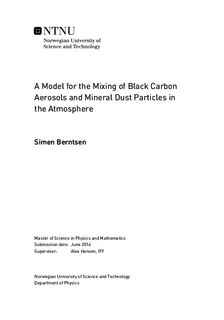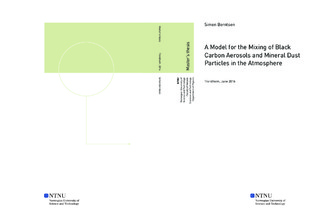| dc.description.abstract | The process when freshly emitted black carbon particles are forming clusters and the mixing of these black carbon clusters and mineral dust particles has been simulated for a two-dimensional system. This has been done by combining diffusion-limited cluster aggregation and multifractal turbulent velocity fields. A simple model where the mineral dust particles drive the deposition of black carbon has been developed and investigated, suited for quantifying the deposition of black carbon aerosols in dry, desert-like areas such as Sahara or the Arabian peninsula. This is of interest as it is assumed that the lifetime of black carbon particles in the soil of these areas are very long. The deposition of black carbon may change the albedo of the surface of the Earth, which may effect both local weather and the climate. The results from the model, although uncertain, indicate that the lifetime of black carbon in the atmosphere with respect to uptake on larger dust aerosols is short enough to allow a substantial fraction of the BC emitted (mostly from flaring from oil/gas extraction) to be deposited in the high albedo desert regions where emissions occur. | |

